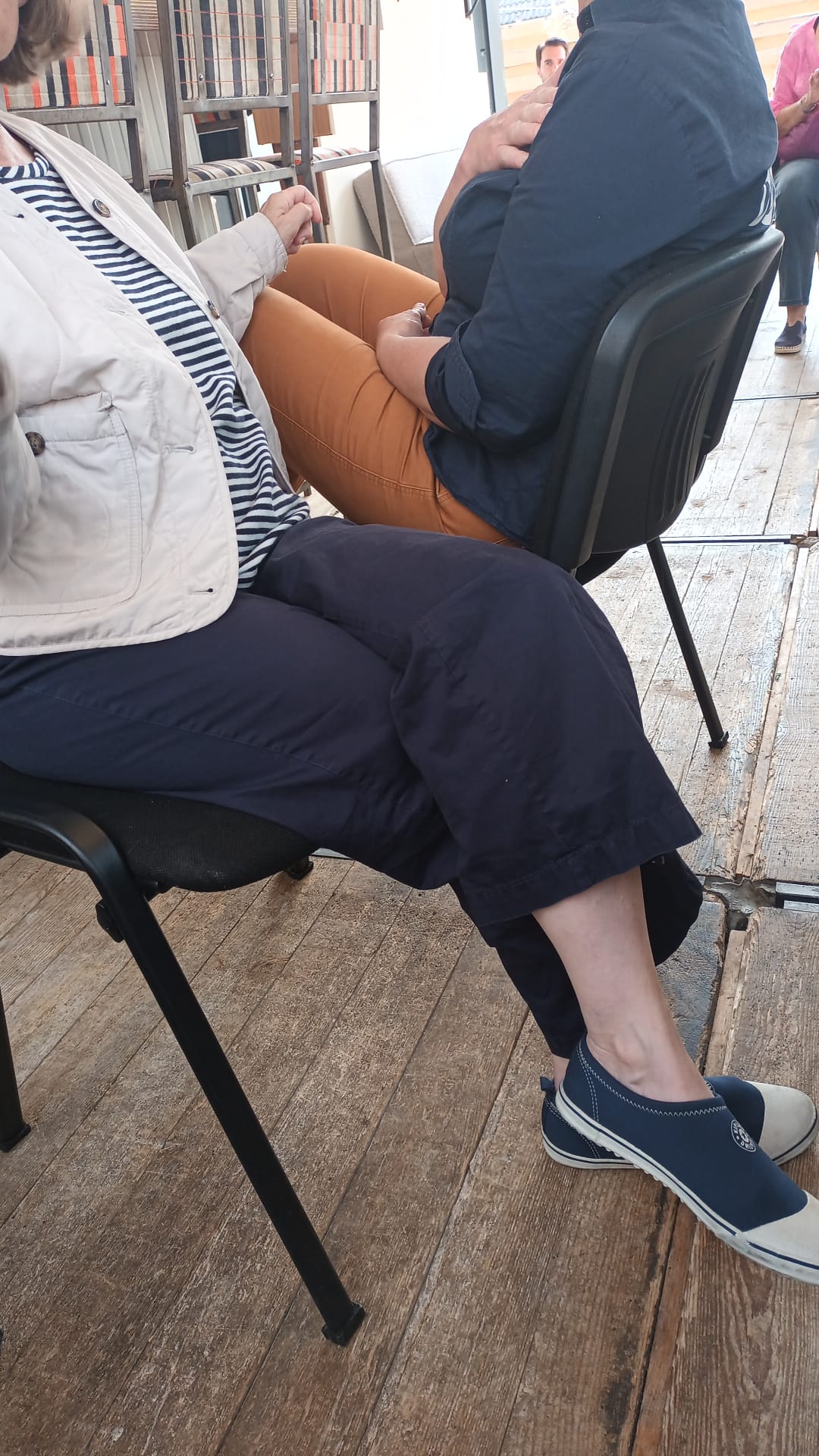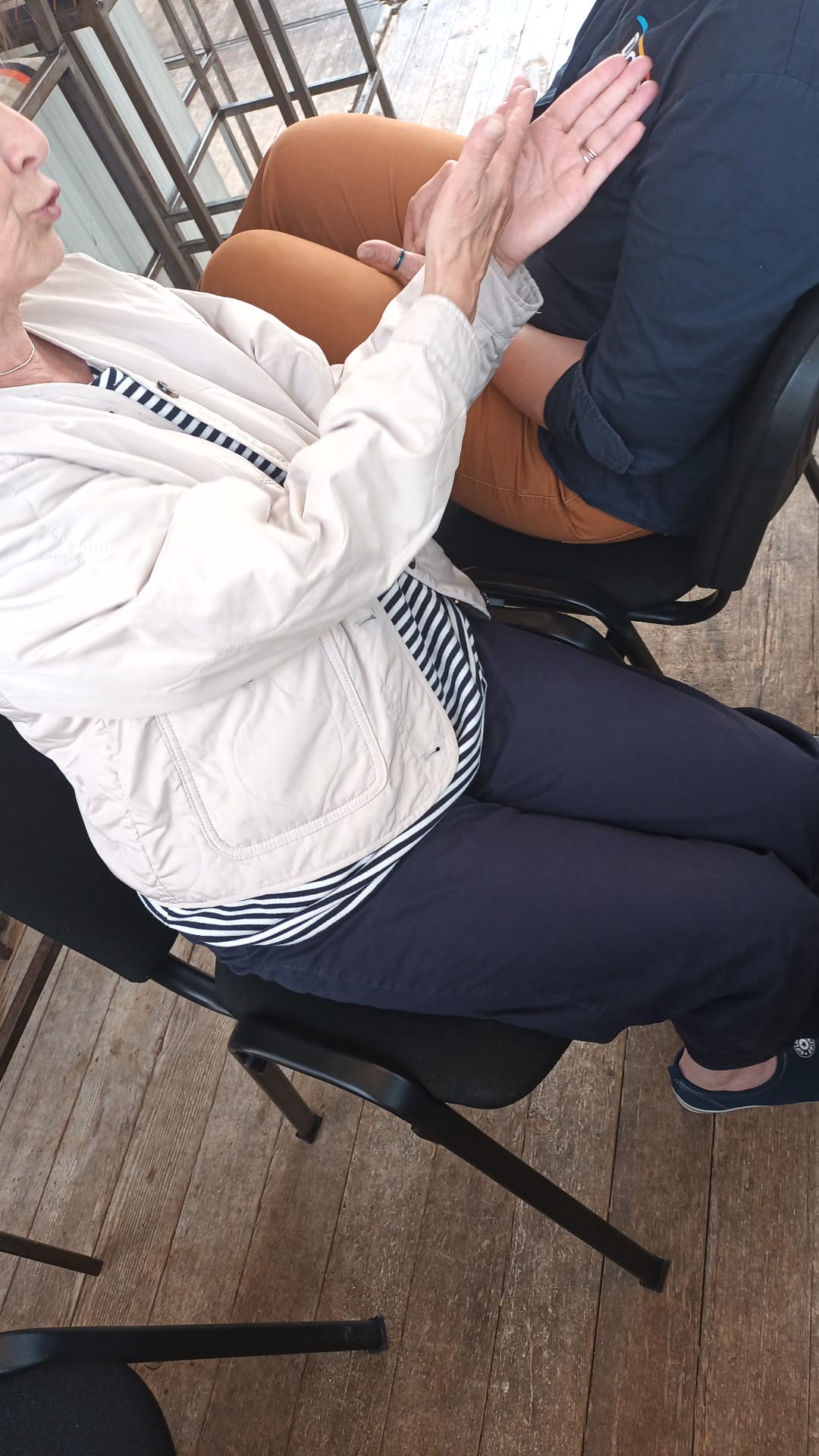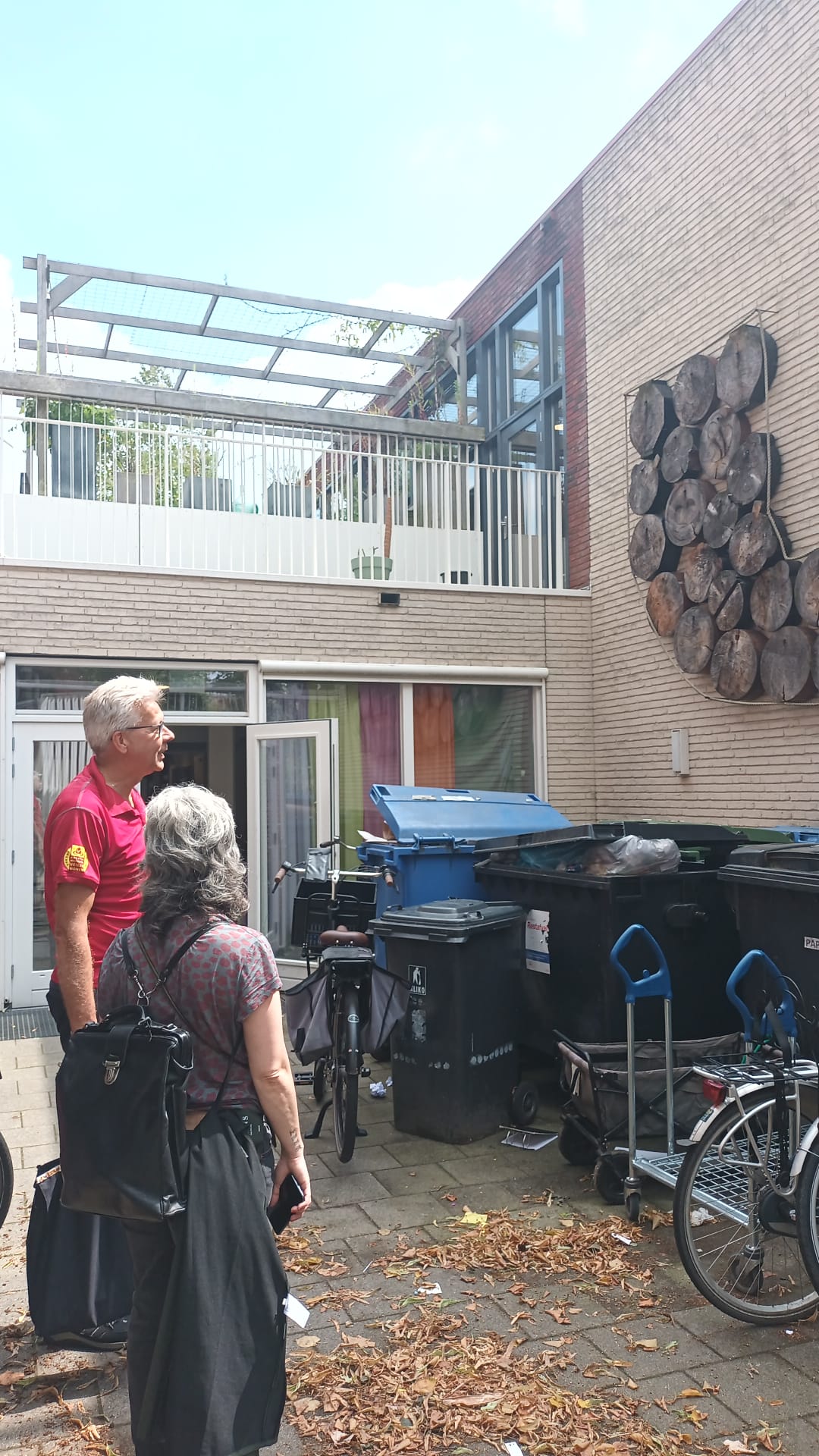Complaint Session at Wijktafel De Pomp
Published at
Gemene Grond organizes complaint sessions; you can vent, no one judges. A complaint often also conceals a wish. These complaining sessions can lead to a translation of individual collective questions and desires. With these sessions we collect complaints, feedback and wishes from people living in and around Merwede, to present them together to the parties developing Merwede, including the municipality of Utrecht. Merve Bedir and Zoraïma Hupkes wrote a diary entry about such a complaining session.
Diary entry by Zoraima Hupkes and Merve Bedir
Before Merve and I went to De Pomp, I spoke to Nienke, “sociaal makelaar“ at DOCK, on the phone the day before to check if we were still welcome. Nienke is one of those people you talk to as if she’s an old friend, super approachable and open. Exactly the kind of person you want as your “sociaal makelaar”. The Croeselaan doesn’t have a Buurthuis anymore, yet Nienke arranged the regular Wijktafel’s to be organized at De Pomp, which is the old gas station and currently a hip café, offered to host them and people get free (very good) coffee. It’s nice to sit there but organizing something in group form is difficult because of the acoustics, not helped by the fact that most of the people joining the Wijktafel are elderly. So, after a less accessible, yet very friendly introduction-round, Merve and I had to face the fact that our strategy of collective conversation was not going to work. But Merve gave them something to think about by posing some questions: how do people come together here, what is the approach of public art in general, how can public art be for people? What are the things you like in your neighborhood, what things you don’t like? What would you like in a neighbor? Think about your daily life. How can art speak to these questions? We split up in two groups so we can hear each other speak so I’m speaking to Govert, Carin and Nienke. It is clear that most of the people in the group are long term residents, Govert for example has been living in the area for more than 83 years! He lives in the house where he was born, he’s very active and everyone knows him. He was rewarded “De Gouden Buur” in 2019 and he’s known as the “De Straatconciërge”. Carin says “If every neighborhood had someone as Govert, we would not have any problems anymore.”
I notice that in this neighborhood, the number of activities or interest in the cultural field are very high and a lot is happening. But then again, the people at this table are not representative of all the people in the neighborhood. We talk about “klapstoel cabaret”, Gluren bij de Buren, plans for a ceramic bench in the neighborhood and new murals. One of the residents even sprayed her name with the spraycan of the artist Munir, “It was surprisingly difficult.” Carin excuses herself saying she really needs to go and even so she doesn’t see herself as being creative so maybe her input is not that important (her words) but at the same time she mentions 2 concepts she likes in 5 minutes: She saw some neighborhoods in Japan where there would be someone sitting on a chair on the sidewalk, all day long, so anyone could just join him and share if they wanted, sit with him for a while if they feel lonely. Another example is the La Sillas Confidentes, chairs she saw in Mexico. People sit next to each other but opposite from each other so they are forced to talk to each other. She re-created this chair together with Nienke. It is funny when people say they have nothing to say and they end up saying really crucial things. Nienke mentions again “we need to have our own space.” We need a space where “something” can happen. Also the “we”and “us” becomes very apparent if you organize a meeting in a café, it's not inclusive.
At Merve’s table:
We started from this one bench that two people (one a ceramic artist) wanted to make, and got in touch with the municipality. The idea was to address the lack of open spaces. The response from the municipality was that they wouldn’t take any responsibility if they wanted to do so. To them, this was a very simple way of rejecting an idea. There I asked, what if that bench was made possible in Merwede, would you go? Yeah maybe why not, interesting, but yet it's too far away. What if the bench is a “pop-up” or traveling bench, benches on tour. “Then the question is about where we are going to put them, and who is going to look after them? We don't have enough open space.” This conversation opened the door to the lack of open and green space in the neighbourhood. “They just keep on building around here.” I asked how they spend their weekends and where their families live, they don’t stay in the neighbourhood when families visit.
“We need green gardens as accessible spaces to gather.”
“There was a Buurthuis before but that was back in the 70s. We want our space! Even when the coffee is free here (De Pomp), it defers people.”
We know public art cannot respond to these questions but it can ask these questions. You can do it yourself? We lack the process, we need processes to empower us to do art.
Back to Zoraima’s table:
Another resident comes to the table and tells me how important this coffee table is because after she retired she only had her volunteer job at De Dom so this is an extra social thing for her. Then Ruud joins the conversation, he’s wearing a shirt with a logo that makes me think of the brandweer but I think he’s part of some kind of neighborhood watch but it is immediately clear Ruud is very invested in Dichterswijk and its surroundings as he immediately spits out many creative ideas and tells us what he thinks is important. One of his ideas would be to make a route through the neighborhood with the old steel from the Demka factory, “It’s important to stay in touch with the history of this area”. He also shares the story of an informally placed statue that was removed in Kanaleneiland because “it was illegal,” and that the whole neighbourhood started a protest because they liked it so much and Ruud adds “now you come to ask us what we would like as public art in public space?”
“I think history is important to a neighbourhood, but not to linger in” says Ruud, he sees it as an introduction for newcomers in the area, another woman at the table says she sees it more as a welcome to newcomers. Nienke mentions an initiative of a young guy who makes a podcast about old stories next to new stories.
Then Ruud starts talking about another historical fact, “de bruine vloot”, which we haven’t heard of even though we have walked through the place many many times. He also mentions a project he did at Beton T where he built an artwork with pieces of wood of one of the old masts of the boat. He would really like to show it to us and what follows is a walk with just the three of us through the neighborhood. He seems proud, a bit worried about the rapid transformation but especially very involved in his part of town which is very nice to see.



